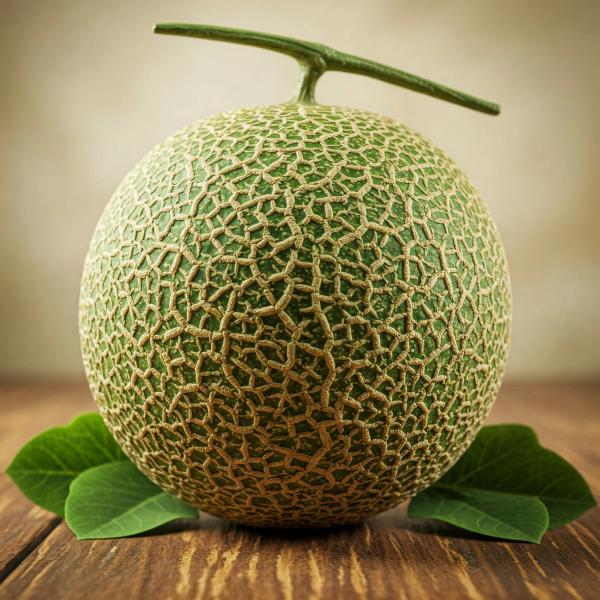Modern Pickling Trends in Indian Cuisine (2025) — my messy, crunchy love letter#
So here’s the thing. I grew up in a house where summers literally smelled like mustard oil and mango sap. My nani’s hands were yellow from haldi half the time. And I thought I knew pickle. Achar. Then 2025 showed up and basically said, hey kid, you ain’t seen nothing yet. We’re talking lacto-ferments next to grandma-style oil pickles, funky citrus peels living in jars, brines getting saved and shaken into cocktails. It’s weird and it’s wonderful and I can’t stop eating it with everything.¶
A memory that still tastes like May heat and mango skin#
I remember—like painfully clearly—the year we mis-timed the aam. Ahmedabad, scorching May. We bought totapuri too early, they were still kinda tart and stubborn. Nani shrugged, added a splash of jaggery syrup and extra rai and methi, and boom, the achar turned into this tangy-sweet thing we inhaled with khichdi for weeks. That’s the thing I love about Indian pickling. It forgives. It adapts. It’s like, trust me, I got you.¶
What’s actually new in 2025 pickling, at least from what I’m seeing and tasting#
Look, everybody’s been fermenting since 2020-sourdough times, but 2025 has leveled up. Chefs and home folks are doing three big things: dialing down oil and vinegar when they want probiotic funk, dialing up smoke and spice when they want classic achar vibes, and riffing with grains and koji like it’s totally normal to inoculate jackfruit stems in a Mumbai kitchen. Is it? Honestly, yeah, kinda now.¶
- Lacto-fermentation is everywhere: 2% to 3% salt brines for carrots, radish, chillies, even lotus stem
- Koji and miso-style pastes with Indian pulses: think urad or chana miso rubbed onto green mango slices
- Zero-waste jars: watermelon rind chhunda, citrus peel achar, gongura stems not just leaves
- Pickle brine as an ingredient: salad dressings, dirty martinis with mango brine, micheladas with chilli-lime achar water
- Solar-dried and then brined: sun-kissed lemons, then a light brine for sharper pop instead of heavy oil
I’ve had menus this year where achar shows up like a supporting actor in every scene. A spoon of pickled kokum on fish crudo. Pickled bamboo shoot shaved onto a rice bowl. Even a garlicky, lacto-fermented green chilli folded into butter for bread service. Mumbai and Bengaluru, I’m lookin at you. And no, I’m not naming every place, some were pop-ups, some were new menus, and some I literally stumbled into between meetings. But the trend is real enough my tastebuds can vouch.¶
Regional achar going modern without loosing its soul#
- Northeast: bamboo shoot and bhut jolokia ferments that almost hum, super clean if you keep the salt right. I had a version that was just salted, no oil, but warm tempered mustard oil drizzled on top when serving. Off-the-charts good.
- Gujarat: chhundo’s having a moment beyond parathas. I’ve seen microplaned chhundo folded into yogurt for a sweet-hot dip. Don’t knock it till you dunk it.
- Andhra and Telangana: gongura gets pickled leaves and even the stems. Slightly sour, spinachy, totally addicting with rice and ghee.
- Kashmir: crisp lotus stem pickles with fennel and hing. I’d eat it like chips if no one was watching.
- Bengal: mustardy kasundi getting aged longer for deeper umami. People are blitzing mustard seeds and fermenting with a bit of soaked rice for body—wild but it works.¶
Restaurants and chefs playing with brine, not just oil#
If you’ve eaten around India lately, you’ve probably seen it too. The places that used to serve one token pickle now do a little trio, often seasonal. I’ve spotted ferments on tasting menus in Mumbai that sit next to classic oil-based achars on thaali-style spreads in Delhi. And Bengaluru’s got this crunchy-vegetable energy right now—pickled long beans, green peppercorns, even jackfruit seeds. No one’s abandoning mustard oil, don’t worry. They’re just making space for brines that don’t knock you over, you know?¶
Techniques that actually helped me not ruin my jars this year#
- Use a digital scale and go 2% salt by weight for simple veggie lacto-ferments. If your veg weighs 1000 grams, salt is 20 grams. Easy.
- Keep it submerged. I use a zip-top bag filled with a little brine as a weight. Old-school stone weights if you’ve got ‘em.
- Burp less, airlock more. Those water-sealed lids or even a loose cap means less mold drama.
- If you’re doing oil-based achar, heat mustard oil till it just smokes, cool it, then pour. You get the pungency without the harsh bitterness.
- Taste early, taste often. Most lacto-pickles hit that bright spot around day 4 to day 7 at Indian room temps. Fridge it when it’s right.
My slightly chaotic 2025 tasting notes#
Delhi trip in Jan: got a lotus stem achar with just enough hing to make you blink, served with a goat kebab and a strip of pickled red onion. Bengaluru in March: a pop-up with pickled avocado—yes, I rolled my eyes too, then I asked for seconds. Mumbai, monsoon menu last month: tiny spoon of kokum-brined raw mango on raw fish. Me and him went quiet for a minute, which basically never happens. Some of it is gimmicky, sure. But a lot of it’s honest, exciting food.¶
Health-ish, but let’s be real about it#
People are very probiotic these days. Lacto-ferments do bring that gut-friendly vibe. But classic Indian oil pickles? They’re shelf-stable magic, not a wellness tonic. Both can live in the same kitchen. I keep low-salt, brined carrot-chilli for sandwiches and a jar of old-school lemon achar swimming in mustard oil for curd rice days. Balance. Also, don’t believe anyone who says there’s one right way. There’s a right-for-you way.¶
New toys and tiny hacks I’m low-key obsessed with#
- Cheap pH meters are everywhere now, and they’re worth it. You don’t need to obsess, but seeing the brine drop under 4.0 is oddly satisfying.
- Ceramic fermentation crocks from indie studios—Jaipur and Pondy are making lovely ones. The wide mouths make packing veg so much easier.
- Dehydrator or a sunny balcony. I’ve started sun-drying lemon halves two days before brining. It concentrates flavor like whoa.
- Keep leftover pickle oil. Toss it with roasted potatoes or drizzle on grilled paneer. You won’t forgive yourself if you waste it.¶
Achar is how we cheat time. It’s May in a jar when it’s November on the calendar.
Pairings that made me do the little happy dance in my chair#
- Cheese board but make it desi: aged cheddar with sweet-lime chhundo, and a young goat cheese with curry leaf–lemon brine. Fancy but not prissy.
- Cocktails: a very cold gin martini with two drops of mango achar brine. It’s like salty wind on Marine Drive but in a glass.
- Breakfast: buttered sourdough, smear of kasundi, sliced cucumber, black pepper. Ten seconds, all swagger.
- Rice bowls: hot ghee rice, fried egg, spoon of Andhra gongura pickle. Eat fast, thank me later.¶
A quick, modern achar I keep making by accident and then on purpose#
Green peppercorn and fennel “fridge achar” — crush 1 tablespoon fennel seeds, 1 teaspoon mustard seeds, and a few green peppercorn sprigs. Pack with thin-sliced fennel bulb and green chillies in a jar. Cover with 3% warm brine, a splash of jaggery syrup, and like a teaspoon of mustard oil. 2 days on the counter, then fridge. Crunchy, slightly sweet, peppery. On grilled fish, it slaps. On aloo tikki, it slaps harder.¶
- Mistakes I still make: overfilling the jar, forgetting headspace, then cleaning pickle geysers off my counter like a clown
- Under-salting because I want it “healthy.” It just gets mushy. Don’t do that, future me.
- Going chilli-happy. Fresh green chillies get hotter as they ferment. Respect the chilli. Or cry.
The sustainability bit that doesn’t feel preachy, promise#
Pickling is how my mom stretched seasons without calling it sustainability. 2025 has put a name on it, sure, but the heart is the same. I’ve been saving citrus peels, shaving the pith, and brining the rind with a little sugar and salt. That tiny jar rocked a whole week of salads. Watermelon rind achar with black mustard is another stun. We’re all throwing away flavor because we were told it’s waste. It’s not. It’s lunch.¶
Where to go if you’re pickle-curious right now#
If you’re in Mumbai, look for places that list “house ferments” on the menu—ask for the day’s jar. In Delhi, some modern Indian spots are doing thaalis with a rotation of seasonal pickles, not just the standard lime. Bengaluru’s pop-up scene is kinda wild this year; check the farmer’s markets on weekends for small-batch jars, especially stuff like pickled long beans or citrus peels. And honestly, the best achar I ate this year came from a friend’s aunt in Indiranagar who labels her jars with masking tape and pure attitude. Don’t sleep on your neighborhood aunties.¶
If you wanna try at home, here’s my 10-minute starter plan#
- Slice something crunchy: carrot, radish, cauliflower stems. Wash, don’t overthink.
- Make a brine: 2 cups water, 12 grams salt. Stir till clear.
- Spices: 1 teaspoon mustard seeds, 1 teaspoon fennel, 2 smashed garlic cloves, 1 dry red chilli.
- Pack jar, pour brine, weigh down. Loose lid.
- Counter 2 days in warm weather, then taste. If you smile, fridge it. If not, give it another day. It won’t not get better.
Tiny contradictions I believe at the same time#
Achar should be loud, but not shout. Oil is essential, except when it isn’t. Sugar is fine, jaggery is better, and sometimes neither belongs in the jar. See? It’s a conversation, not a commandment. Which is why I love where Indian pickling is in 2025—it’s honoring nani while it flirts with koji, it’s gobi-gajar-shalgam next to bamboo shoot funk, it’s mustard oil next to clean brine. We can hold both without breaking anything.¶
Anyway. If you made it this far, thanks for hanging out in my slightly chaotic achar brain. If you try a new jar or find a place doing something wild with pickles, send me a note. I’ll probably run over and taste it, spill a little on my shirt, and write about it later. For more of my food rambles, recs, and the odd recipe that works even when I forget to measure, I keep posting on AllBlogs.in — it’s where half my cravings go to live.¶














